Going to extremes at the Wildflower Center
Lace cactus in flower
Gardening in central Texas is all about embracing extremes—of temperature, of rainfall, of summer’s brutal duration, and, most delightfully, of the contrast between soft and spiky. One element of good design is using contrasting forms, and our native plants offer many opportunities, as evidenced by the springtime scene last week at the Lady Bird Johnson Wildflower Center.
Billowy poppies cozy up to stiff-armed Agave neomexicana.
Imagine a sunny, xeric garden bed composed of winecup (Callirhoe involucrata) flowing around…
…spiny Mexican prickly poppy seedheads (Argemone mexicana), which stand stiffly among…
…cool waves of pink evening primrose (Oenothera speciosa), which contrast with…
…spiky, cool-green agaves. Ah, beautiful!
The Wildflower Center’s display gardens offer plenty of examples of such contrasts, especially at this time of year when so many billowy wildflowers are in bloom.
Of course, some of the beds are more on the spiky side, like this desert garden of yucca and hesperaloe, accented in a kitschy way with a bighorn sheep skull.
The Wildflower Center has gotten more creative in its designs in recent years. This geometric bed is all about line and swaths of the same plant, for a contemporary effect. The yellow hesperaloes are mulched with bits of glass.
Stock tanks have made an appearance too, with Wright’s penstemon, pink evening primrose, and Salvia greggii making a pretty spring container garden. Datura is set to take over in summer.
Masses of wildflowers are what many people expect to see here, naturally.
Yet despite its name, there is so much more to discover at the Wildflower Center.
An intriguing water feature marks the entrance with a zig-zagging spillway from the top of the wall to the rectangular pond below.
Native pond plants like this iris soften the formal lines of the pool.
Reeds arch over the reflective surface.
A red-stripe ribbon snake is often seen basking at the water’s edge.
Dragonflies duel in the air and stare down the paparazzi on their rest breaks.
In another part of the garden, horsetail reed marches streamside, while water lily leaves jostle for maximum sun exposure.
In the shade, maidenhair fern dips her tresses in the brook.
Possumhaw holly (Ilex decidua), still wearing the red berries of winter, is leafing out.
Agave lophantha is throwing a New Orleans funeral party for itself with a beautiful bloom spike.
After the bloom fades, the agave will die, but not before producing seeds, bulbils, or pups for the next generation.
A green window opens in a beautiful stone wall.
Clematis pitcheri, our dainty, native clematis, twines its way up the wall, displaying dozens of frilly, bell-shaped flowers.
I adore this vine and have been trying to get one to thrive in my garden. Mine merely sulks. Seeing this one, I think perhaps mine wants more sun.
On a nearby wall, scarlet clematis (C. texensis) puckers her red lips.
And I haven’t even mentioned the great horned owl chicks that call the garden home. As you can see, there’s much going on here. Why not visit and see for yourself?
For a look at the Wildflower Center in other seasons or years, visit my posts:
Great Horned Owlets Nesting at Wildflower Center
Camera Practice at the Wildflower Center
This Place I Love So Much
Fascinating Faces at the Wildflower Center
Sculpture Show Enlivens Wildflower Center in Winter
Stock Tank Planters Gone Wild!
Wildflower Center & Jill Nokes book-signing
Winter Wonderland at the Wildflower Center
Goblins in the Garden at the Wildflower Center
All material © 2006-2011 by Pam Penick for Digging. Unauthorized reproduction prohibited.


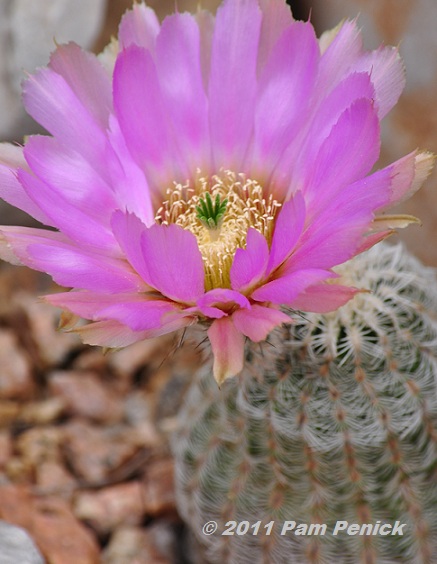
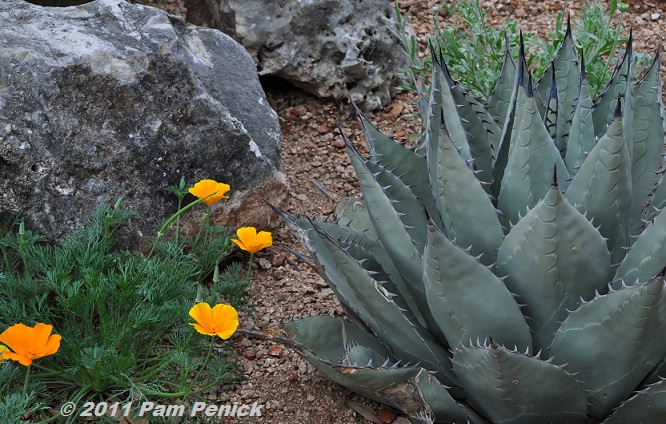
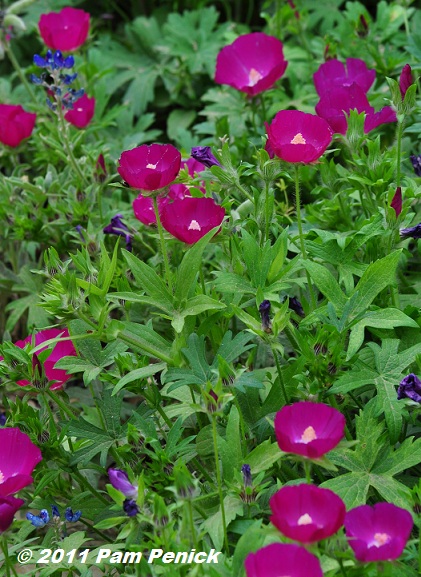
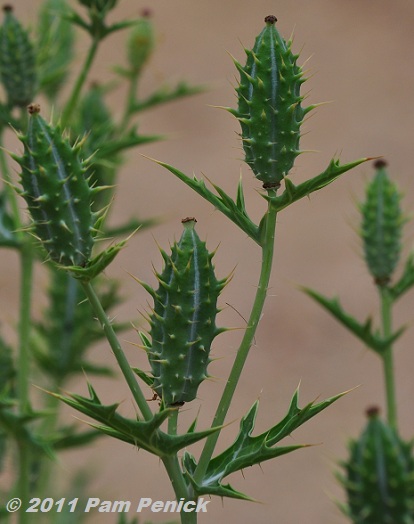
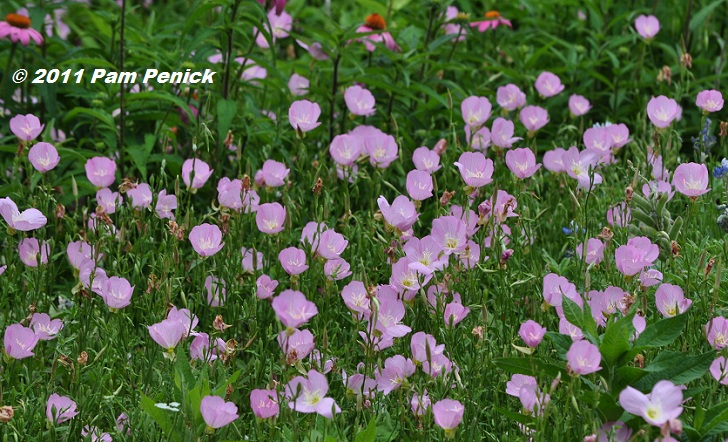
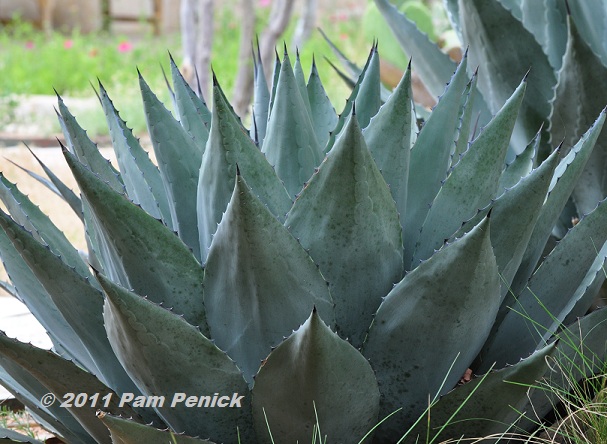
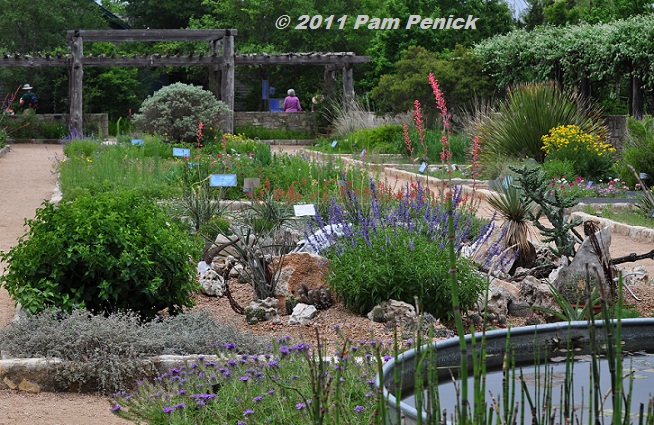
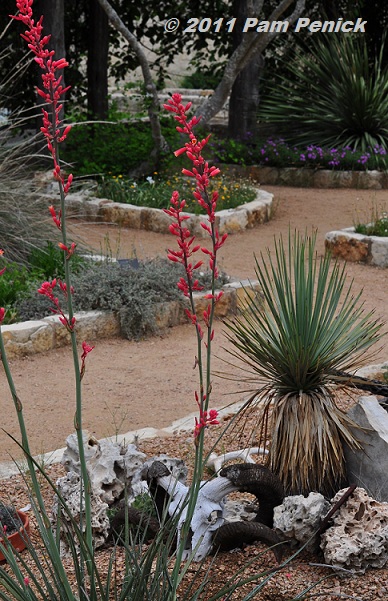
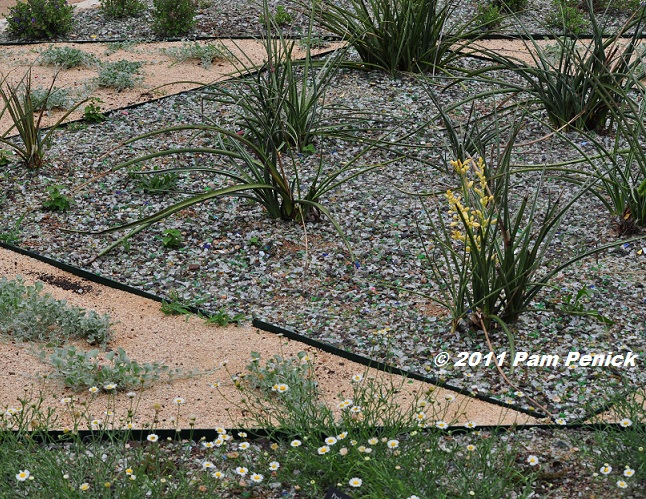
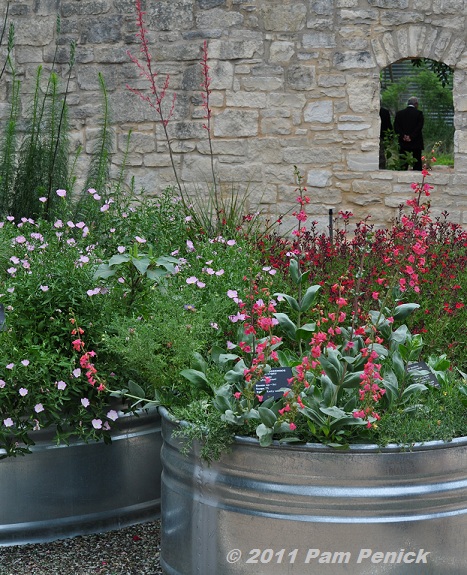
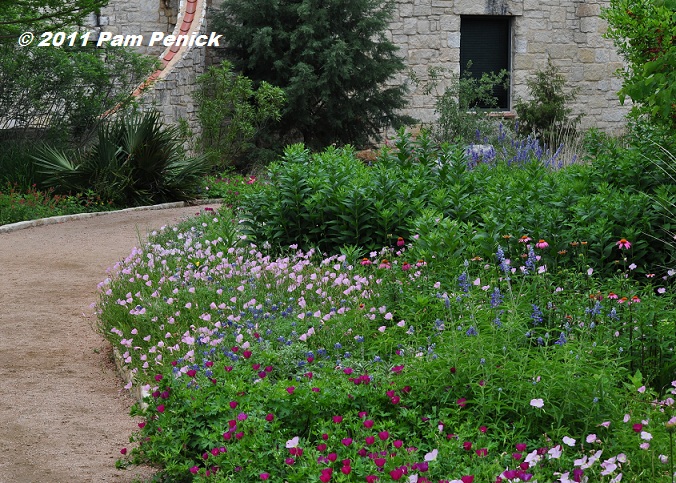
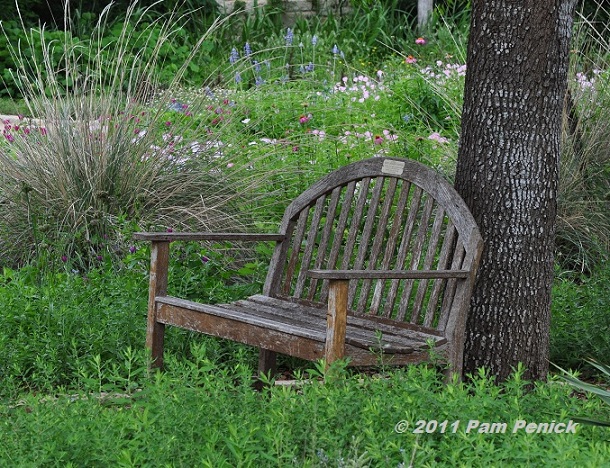
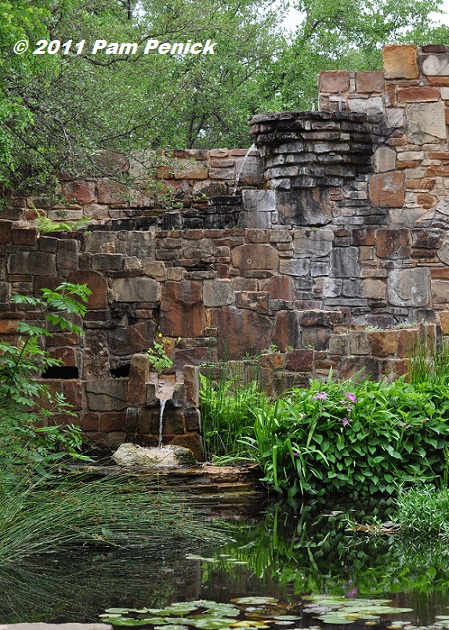
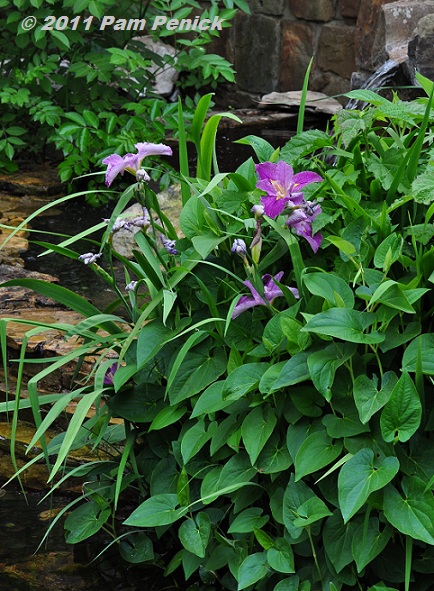
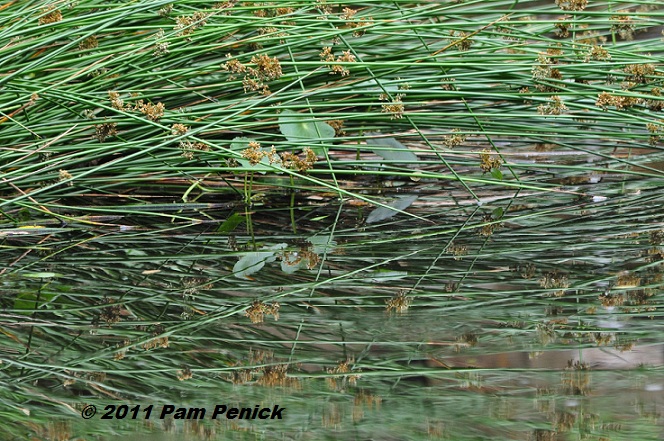
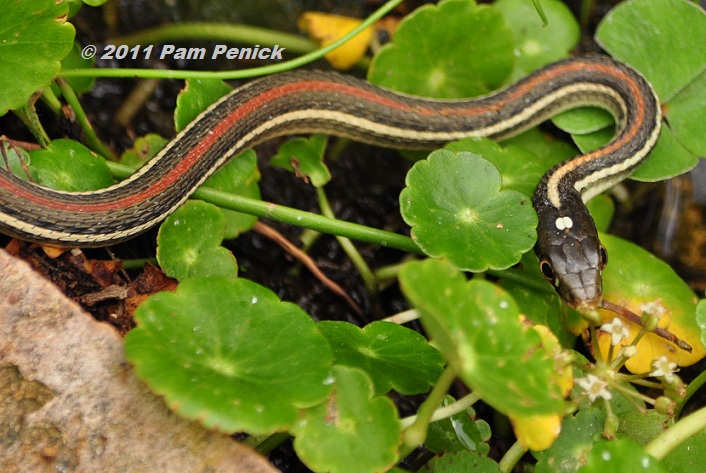
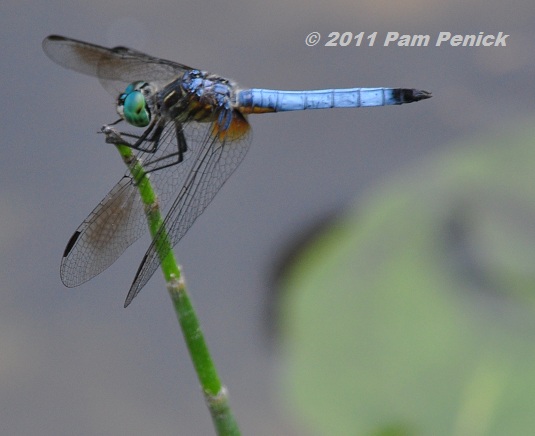
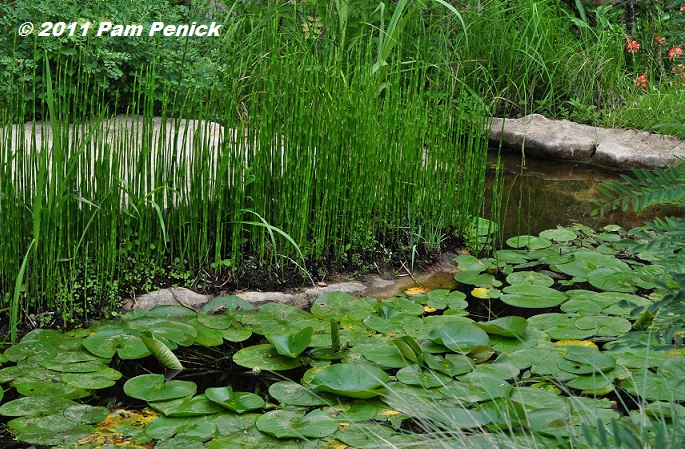
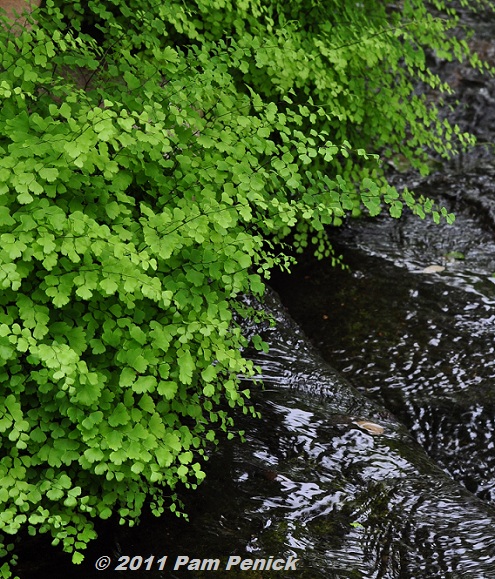
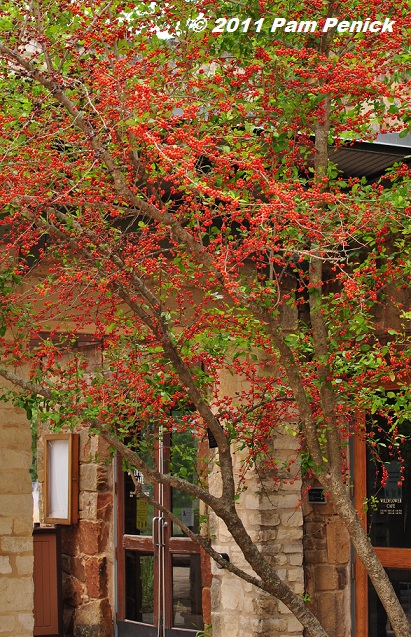
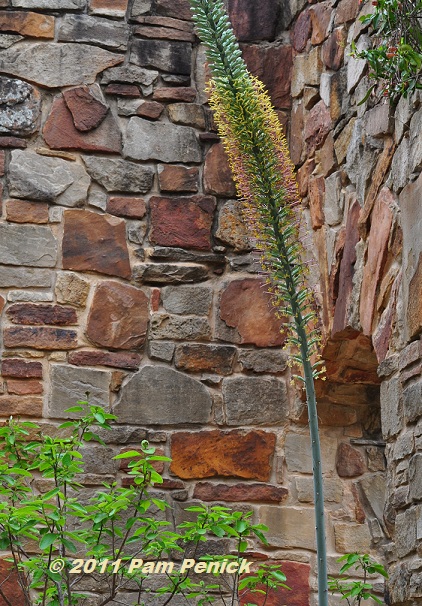
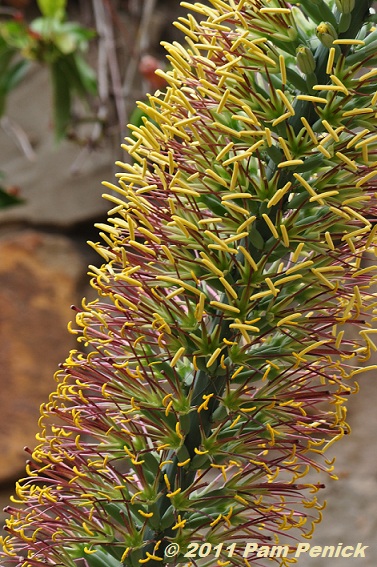
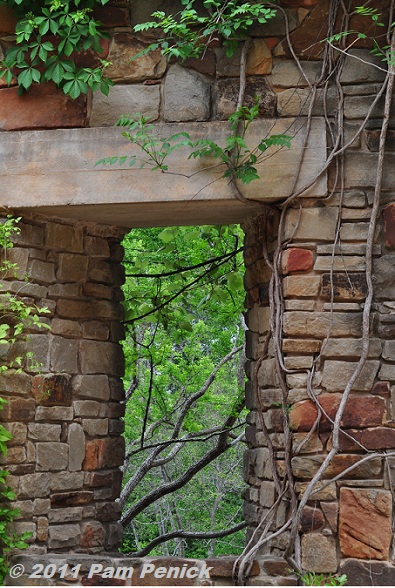
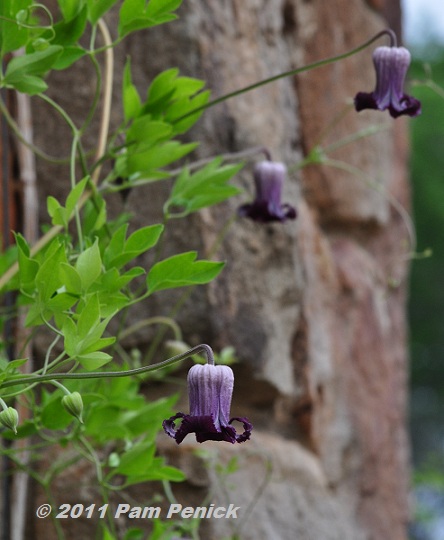
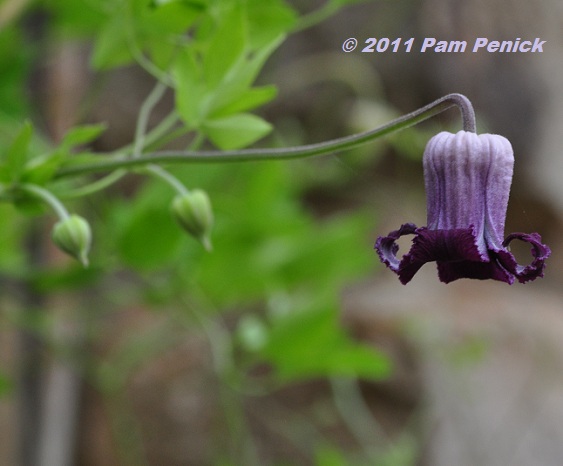
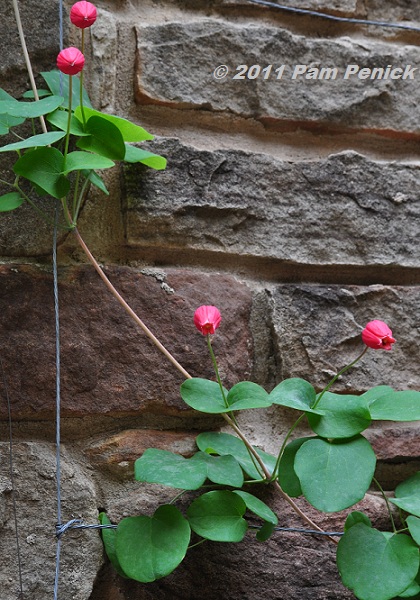
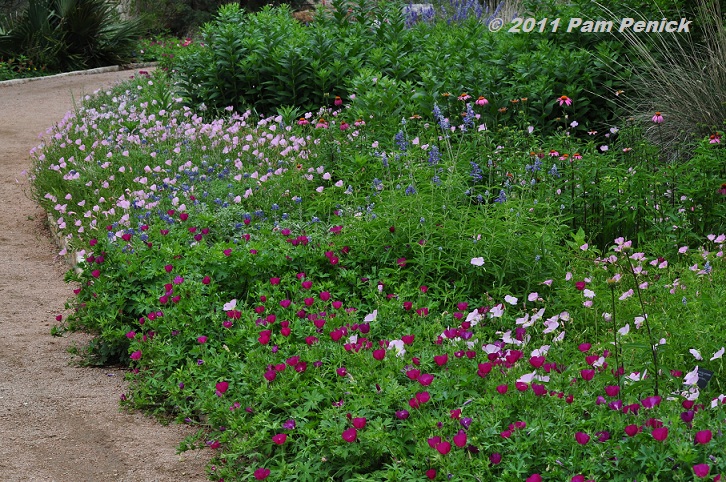
Happy Easter Pam and family. As always your capture of the Wildflower Center beauties is just exceptional. I noticed that Mexican prickly poppy last week. It was in flower and not the usual white one we see around here. I have never seen it before. They once told me they are selective in which plants they allow and the white form was not one of the plants they allowed! Maybe the yellow is more mannerly. Also, the Ca poppy is a first for this this year. I am glad they added it. I shall be out there on Tuesday and look forward to catching up with the blooms in real life.
Pam if you were my neighbor I would trade a boatload of Mealy Cup Sage I gathered in the garden and trade you for some of the those winecups!
I really need to use winecups and blackfoot daisy more in my plantings, to unify them. Looks even better than when I went a month ago, as the [photo]death star kept popping out!
Oh, my. I so envy the depth and breadth of plants available to your area. Very beautiful.
And I love the kitschy skulls, myself. One as a specimen in the landscape? Perfect.
As ever, thank you for sharing your lovely photos.
It is good to see a bit of wildlife at the wild flower center. It is amazing how dainty the native flowers look when you know they are tough as nails to live in this environment of extremes.
Wow! What a stunning place to visit. I too love the juxtaposition of the soft and spiky plants. I experienced some of that in Arizona. Baja fairyduster comes to mind. Do you have that there? I loved it. Also good to see our state flower in there–our California poppies! Always welcome everywhere, I bet. Our evening primrose is not out yet. You are ahead of us there…Thanks for the journey. Happy Easter!
Dadgumit! All was going just beautifully on this tour until the snake photo scrolled up….I now have whip lash from jumping back in my hard chair….sigh
Pam, It’s such a wonderful treasure…and you’ve captured it beautifully. Isn’t the water catchment system inspiring. In an ‘if only’ I could fashion! gail
Lusting, as always, over the WC. What wonderful pictures, Pam. I can’t wait until my winecups take off. I just planted them this year. LOVED the owlette photos from the other day. My little ones were fascinated.
Wow, what a cool tour! Great plants and great plantings. The agave blooms really remind me of the bulbous eremerus–only without all the fuss.
Adding the clematis to my plant wish list… I love seeing new plants on your blog
Pam, the Clematis pitcheri pouts in my garden, too, and it gets a fair amount of sun. I assumed that was the problem but maybe we each need to find a spot that’s a happy medium! Let’s agree to let each other know if we do!
Pam, these photos are really outstanding, which says a lot because your photo quality is always top notch. You Austin gardeners know how straitjacketed you can feel by your extreme climate, but this garden shows the amazing results possible when regionally appropriate, informed plant choices are made — a lesson for every garden anywhere. And yes, I want to visit!
If I ever get a chance to visit Texas, I know the Wildflower Center will be at the top of the list of places to see.
Hi Pam,
What a beautiful photo story! You should publish a book for them! I’m dazzled and we definitely need to visit this place. I had no idea there was so much variety.
David 🙂
Thanks so much for my fix on Lady Bird Johnson Wildflower Center. I’ve been really busy trying to save the 400 some trees we planted at Anahuac NWC and haven’t had time to read blogs for several weeks. I won’t get back to Austin until at least late summer so this was a wonderful virtual experience.